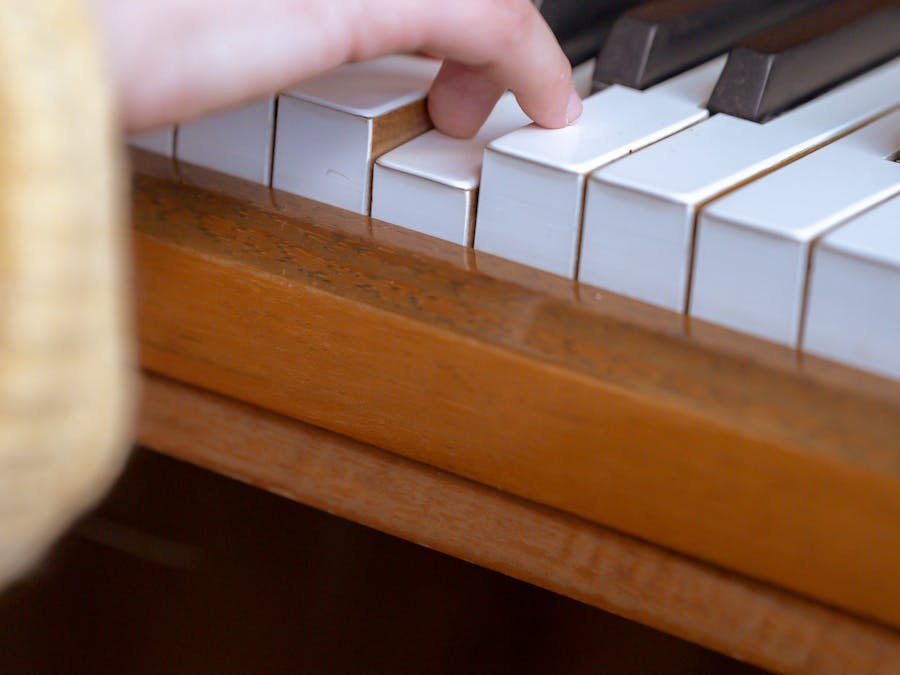 Piano Guidance
Piano Guidance
 Piano Guidance
Piano Guidance

 Photo: Charles Parker
Photo: Charles Parker
piano students around the world learn no more than ten pieces per annum.

A 1996 study found musicians to be measurably smarter than non-musicians because musicians practice skills like concentration and memory more than...
Read More »
The 7 hardest instruments to learn, play, and master Oboe. Even if you don't think you know what an oboe sounds like, you've heard it more than you...
Read More »It’s an oft-used phrase “quality not quantity”, as if the two were diametrically opposed. And if the two are diametrically opposed, who on earth would want to argue for quantity? Quantity suggests superfluity, redundancy, possibly lack of restraint and even a propensity to waste; and none of these are particularly positive attributes in contemporary culture. And yet, as a piano teacher, I find myself realising afresh each week the surprising and undeniable power of quantity. It starts with quantity of time spent at the piano; simply nothing impacts on my students so much as the amount of time they requisition for exploring the piano. It doesn’t even need to be time spent practicing the repertoire I’ve assigned. It’s simply a question of how much time their fingers have spent finding their way about the piano keyboard, how long they have allowed themselves to linger at their instrument. It’s the old 10,000 hour rule – spend 10,000 hours acquiring a skill before you reach 21 years of age, and bingo, irrespective of your natural gifts, you’ll be fabulous at whatever your 10,000 hours was invested in. The research only underpins what piano teachers have known since the dawn of piano lessons: a lot of it comes down to how much time you put into it. When parents of piano students discuss amongst themselves the idiosyncracies of their children’s piano teachers you can be sure one of the first topics is how much practice the teacher requires on a daily or weekly basis. What piano teachers haven’t cottoned on to anywhere near so well is the concept of quantity in relation to the number of pieces leaned. Many (most?) piano students around the world learn no more than ten pieces per annum. The idea seems to be that by investing all their energies into a smaller number of works the quality of the students’ performances will be enhanced. And at first glance this seems to be a reasonable idea. But what happens is that students take longer and longer (in terms of days and weeks) to master an ever-smaller repertoire, and as the time-frames lengthen, and the repertoire lists shorten, so the student’s enthusiasm for practice seems to ebb almost entirely away. For the past decade I’ve been offering students a “100 Pieces Medal”. Once they have learned (really properly learned) to play 100 pieces I award them a medal at the end of year recital. This is readily achieved in the first year of instruction – at 3 pieces a week a beginner student need only have 34 lessons in the year to surpass this target. We count a piece when it is first assigned, and if a student for some reason fails to master that particular composition we subtract the piece from the list when we decide to abandon it. This method of measurement rewards starting something new, and in the rare instance that a student fails to complete learning some piece of music, the ‘penalty’ is imposed at that exact moment that the student chooses to ‘fail’. My students know that I will not assign too many pieces simultaneously (6 different works is about the limit for the best of them), so lessons usually begin with the student telling me which pieces they would like to play – pieces they believe they have completely mastered (accurate notes, rhythm, articulation, dynamics etc.; playing with flow; at roughly the indicated tempo), and that we will move on from. And while my more advanced students do not expect to have a new piece assigned each week, I do find that they will find their own new pieces during the week to present to me at the lesson if they feel I have not been assigning enough repertoire!

Keys can stick one day and then not stick the next day due to the temperature and humidity changes. However, if it does not return to the top, hold...
Read More »
Van Halen, American heavy metal band distinguished by the innovative electric-guitar playing of Eddie Van Halen. The original members were...
Read More »
Aside from the enjoyment it provides, it can heal the brain, improve memory and relieve stress. That makes it a great tool for an academic journey...
Read More »
"He's southern rock-and-roll," explained Tyler, "then he meets this digital hard core guy – so we use a lot of taiko drums. We didn't want to make...
Read More »
Here are 5 such sounds: Silence. Well, this one seems like a no-brainer. ... White noise. First of all, white noise has absolutely nothing to do...
Read More »
The next pitch is called the octave because it's the eighth note (just as an octopus has eight legs). More than a thousand years ago the letters of...
Read More »